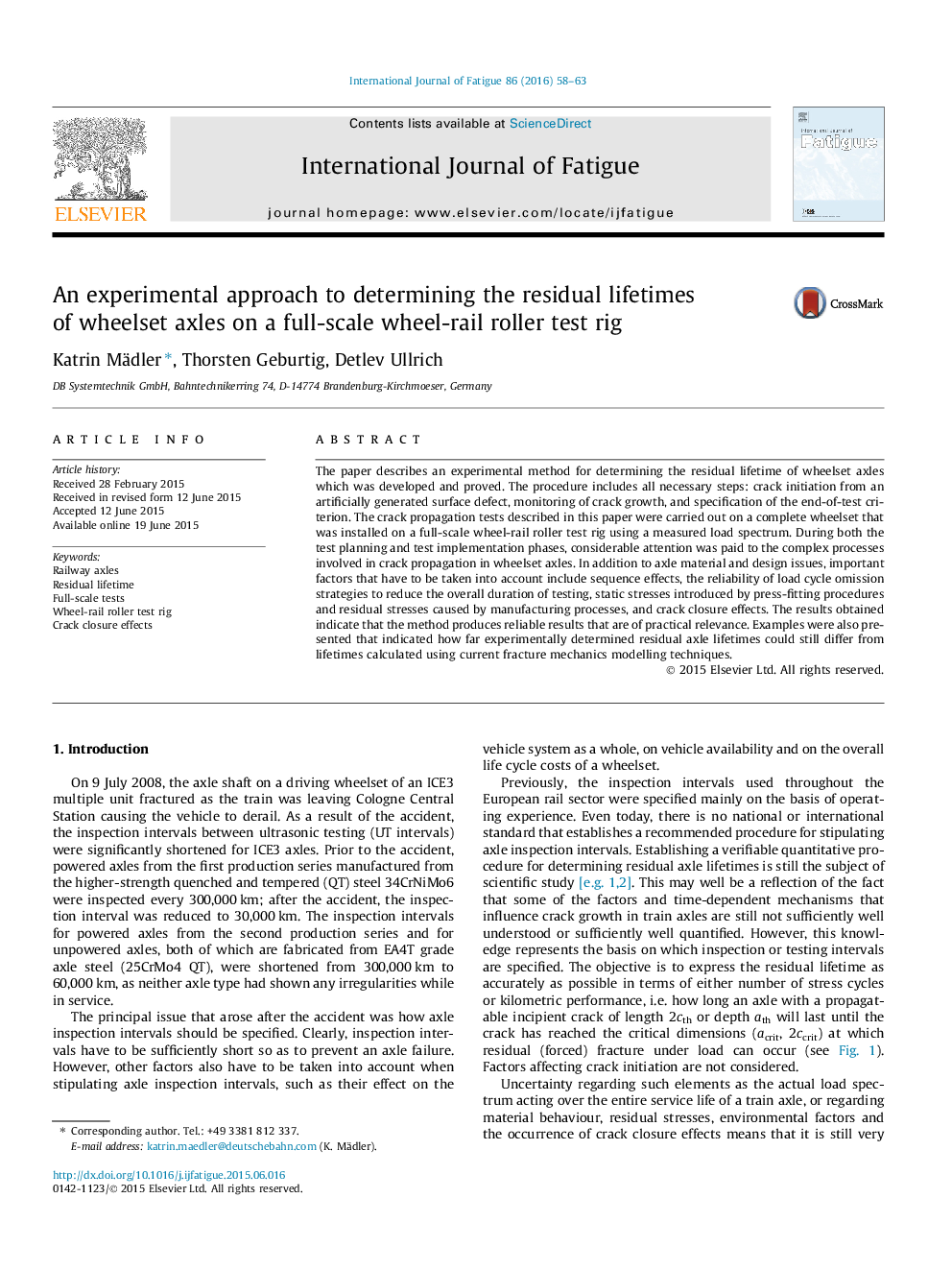| Article ID | Journal | Published Year | Pages | File Type |
|---|---|---|---|---|
| 778121 | International Journal of Fatigue | 2016 | 6 Pages |
The paper describes an experimental method for determining the residual lifetime of wheelset axles which was developed and proved. The procedure includes all necessary steps: crack initiation from an artificially generated surface defect, monitoring of crack growth, and specification of the end-of-test criterion. The crack propagation tests described in this paper were carried out on a complete wheelset that was installed on a full-scale wheel-rail roller test rig using a measured load spectrum. During both the test planning and test implementation phases, considerable attention was paid to the complex processes involved in crack propagation in wheelset axles. In addition to axle material and design issues, important factors that have to be taken into account include sequence effects, the reliability of load cycle omission strategies to reduce the overall duration of testing, static stresses introduced by press-fitting procedures and residual stresses caused by manufacturing processes, and crack closure effects. The results obtained indicate that the method produces reliable results that are of practical relevance. Examples were also presented that indicated how far experimentally determined residual axle lifetimes could still differ from lifetimes calculated using current fracture mechanics modelling techniques.
